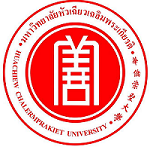Please use this identifier to cite or link to this item:
https://has.hcu.ac.th/jspui/handle/123456789/4667Full metadata record
| DC Field | Value | Language |
|---|---|---|
| dc.contributor.author | 姚诚 | - |
| dc.contributor.author | Yao Cheng | - |
| dc.contributor.author | 谢仁敏 | - |
| dc.contributor.author | Xie Renmin | - |
| dc.contributor.other | Huachiew Chalermprakiet University. College of Chinese Studies. Graduate Student | en |
| dc.contributor.other | Guangxi Arts University | en |
| dc.date.accessioned | 2025-10-15T06:01:34Z | - |
| dc.date.available | 2025-10-15T06:01:34Z | - |
| dc.date.issued | 2023 | - |
| dc.identifier.citation | วารสารวิชาการภาษาและวัฒนธรรมจีน 10,2 (กรกฎาคม-ธันวาคม 2566) : 467-483. | en |
| dc.identifier.uri | https://has.hcu.ac.th/jspui/handle/123456789/4667 | - |
| dc.description | สามารถเข้าถึงเอกสารฉบับเต็ม (Full text) ได้ที่ : https://so02.tci-thaijo.org/index.php/clcjn/article/view/261116/178310 | en |
| dc.description.abstract | 文化在本质上作为意义而存在,个体对文化的理解是一个自身建构意义的过程。对外汉语文化课教学不能再是教师纯粹的直接讲授,必须经由学生真实的参与和思考。对外汉语文化课教学本身是一种传播活动,传播研究的演变大致经历了拉斯韦尔模式、融合模式、共同体模式三个阶段,这些模式的进化发展为对外汉语文化课教学带来启示:要重视间性问题,并且对外汉语文化课教学可以借鉴传播的共同体模式。本文借鉴传播学研究的发展进化,通过梳理“主体间性”“文本间性”“文化间性”这三种已有的间性理论,综合形成更为整体的间性理论,以此为基础,分析对外汉语文化课堂构成元素和课堂空间,从而建构一种新的对外汉语文化课教学理论:间性视野下的对外汉语文化课教学,应努力维护好间性,让间性发挥最大的作用,并以主体之间共有的间性文化为教学起点,以传播的共同体模式为教学方法,最终达成各主体自我、各主体之间更丰富的意义建构。 | en |
| dc.description.abstract | Culture exists essentially as meaning, and an individual's understanding of culture is a process of constructing meaning on its own. Culture course instruction in Teaching Chinese as a Foreign Language can no longer be a purely direct lecture by the teacher, but must be a process of authentic participation and reflection by the students. As culture course instruction in Teaching Chinese as a Foreign Language is itself a communication activity, the evolution of communication research has gone through three stages: the Lasswell model, the fusion model and the community model. The evolution of these models has brought inspiration to the culture course instruction in Teaching Chinese as a Foreign Language: the importance of betweenness should be taken into account, and the culture course instruction in Teaching Chinese as a Foreign Language can draw on the community model of communication. This paper draws on the evolution of communication studies, and by sorting out the three existing theories of betweenness, namely “intersubjectivity”, “intertextuality” and “interculturality”, a more holistic theory of betweenness is formed. The theory of betweenness is used as a basis to analyze the elements and the space of the culture course instruction in Teaching Chinese as a Foreign Language, so as to construct a new theory of culture course instruction in Teaching Chinese as a Foreign Language: culture course instruction in Teaching Chinese as a Foreign Language under the perspective of betweenness should strive to maintain betweenness, let betweenness play its maximum role, and take the betweenness culture shared among subjects as the starting point of teaching and the community model of communication as the teaching method, so as to ultimately achieve a richer construction of meaning in the subjects themselves and among the subjects. | en |
| dc.language.iso | zh | en |
| dc.publisher | มหาวิทยาลัยหัวเฉียวเฉลิมพระเกียรติ | en |
| dc.subject | ภาษาจีน -- การศึกษาและการสอน -- ไทย | en |
| dc.subject | Chinese language -- Study and teaching -- Thailand | en |
| dc.subject | นักศึกษาต่างชาติ | en |
| dc.subject | Students, Foreign | en |
| dc.subject | การศึกษาระหว่างวัฒนธรรม | en |
| dc.subject | Cross-cultural studies | en |
| dc.subject | วัฒนธรรมจีน | en |
| dc.subject | Chinese Culture | en |
| dc.subject | 跨文化教育 | en |
| dc.subject | 汉语 -- 学习和教学 -- 泰国 | en |
| dc.subject | 中国文化 | en |
| dc.title | 间性视野下的对外汉语文化课教学理论建构与应用设计 | en |
| dc.title.alternative | Theoretical Construction and Practical Design of Culture Course Instruction in Teaching Chinese as a Foreign Language From the Perspective of Intersubjectivity, Intertextuality and Interculturality | en |
| dc.type | Article | en |
| Appears in Collections: | College Of Chinese Studies - Articles Journals | |
Files in This Item:
| File | Description | Size | Format | |
|---|---|---|---|---|
| Theoretical-Construction-and-Practical-Design-of-Culture-Course-Instruction-in-Teaching-Chinese.pdf | 224.46 kB | Adobe PDF | View/Open |
Items in DSpace are protected by copyright, with all rights reserved, unless otherwise indicated.
